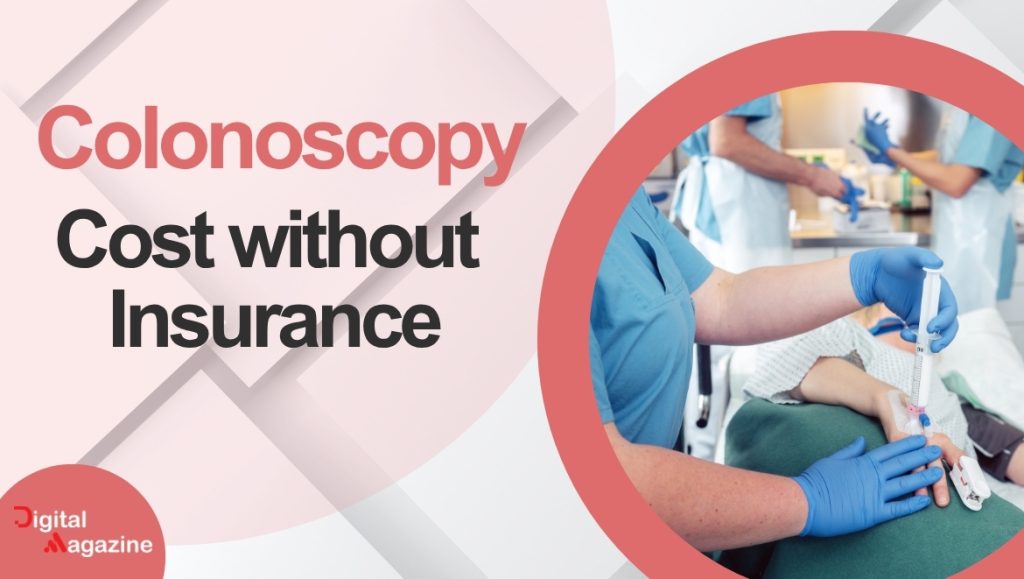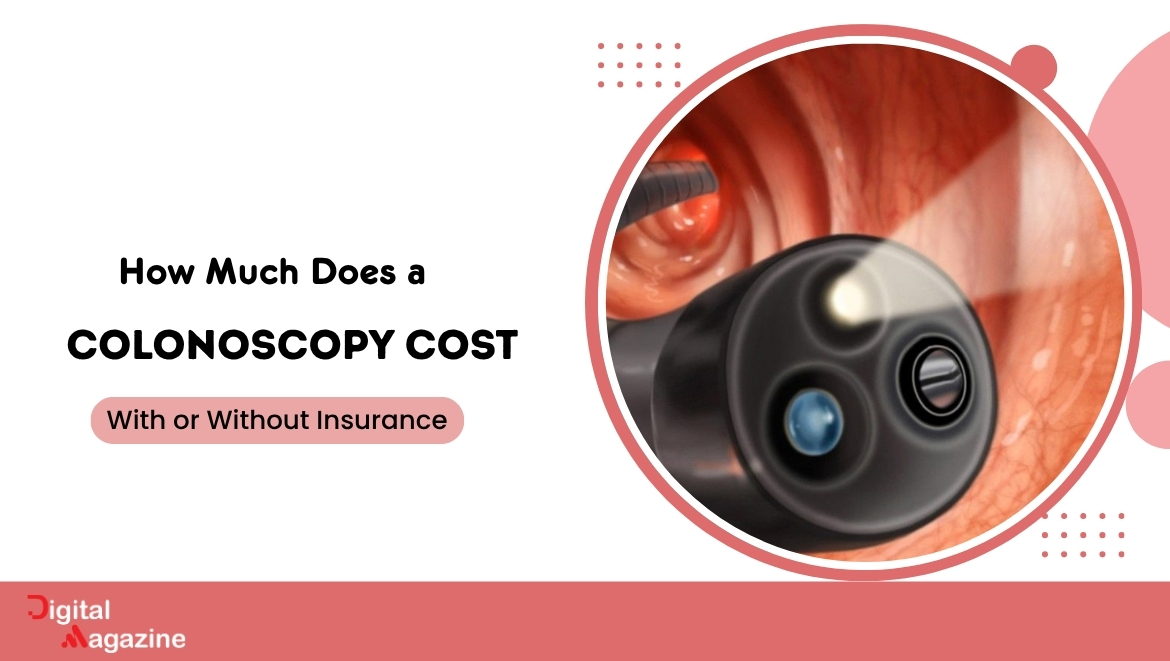How much does a colonoscopy cost? It often feels more expensive than it should. Beyond the cost, it’s important to recognize the critical role of colonoscopy in cancer prevention. According to the American Cancer Society, colorectal cancer is the second-leading cause of cancer deaths in the U.S. Yet, it’s one of the most preventable, especially when caught early through a simple screening like a colonoscopy.
In this article, we’ll break down how much a colonoscopy really costs, with or without insurance. Plus, we’ll share ways to avoid surprise bills, find financial help, and make this life-saving procedure more affordable.
What Is a Colonoscopy?

A colonoscopy is a medical procedure in which a doctor uses a flexible tube equipped with a camera and light (called a colonoscope) to examine the inside of your large intestine (colon). It is used to detect and potentially treat conditions such as polyps, inflammation, or cancer.
Despite its reputation, this medical procedure is typically performed under sedation, and patients don’t remember anything about it.
There are two main types of colonoscopies:
- Screening Colonoscopy: This is a preventive colonoscopy, usually recommended for adults starting at the age of 45, or earlier if they have certain risk factors such as a family history of the condition. It is especially created to detect and address issues before they develop into serious health problems.
- Diagnostic Colonoscopy: This type of colonoscopy is recommended by doctors when symptoms are present, such as blood in your stool, persistent abdominal pain, changes in bowel movements, or underlying conditions like inflammatory bowel disease (IBD).
Understanding the difference between these types is crucial because it greatly impacts your insurance coverage and overall colonoscopy cost.
How Much Does a Colonoscopy Cost Without Insurance?

Without insurance, the cost of a colonoscopy in the United States can range from $1,250 to $4,800, depending on the location and facility. On average, patients pay between $2,125 and $2,750 out-of-pocket.
What makes colonoscopy pricing so confusing is that it’s not a single charge. Instead, the total cost generally involves several separate charges:
Breakdown of Colonoscopy Costs
- Facility Fee: Often the largest part of the bill. Hospitals typically charge around $1,530 for a standard colonoscopy, while ambulatory surgery centers (ASCs) average charge is $989, more than 50% cheaper than hospital pricing.
- Physician Fee: This covers the gastroenterologist who performs the procedure, usually ranging from $400 to $1,200.
- Anesthesia Fee: Most colonoscopies are done under conscious sedation, which adds approximately $300 to $800 to your total cost.
- Pathology Fee: If polyps are found and removed (which occurs in about 40% of cases), the tissue is sent to a lab for analysis, resulting in a separate bill of about $200 to $500.
- Additional Procedures: If your doctor removes multiple polyps or performs a biopsy, you may see extra charges ranging from $300 to $1,000, depending on the complexity.
Geographic Variations in Colonoscopy Costs
Where you live can have a big impact on how much you’ll pay for a colonoscopy. Costs vary widely across the U.S., often depending on local healthcare markets, facility types, and competition.
Here are some average price ranges by state:
- California: $1,800 to $5,000+
- Texas: $1,200 to $3,500
- Florida: $1,400 to $4,200
- New York: $2,000 to $6,000+
In general, rural areas tend to offer lower prices than large metropolitan cities, but with a trade-off: you may have fewer facilities or specialists to choose from.
How Much Does a Colonoscopy Cost with Insurance?

If you have health insurance, your colonoscopy cost depends on multiple factors. However, the great thing is that screening colonoscopies are free under the Affordable Care Act (ACA) when you use an in-network provider.
What ‘Free’ Colonoscopy Really Mean
Here’s where things get problematic: your screening colonoscopy might be free under the ACA, but if the doctor finds and removes polyps during the procedure, it’s no longer considered a screening. At that point, it becomes a diagnostic colonoscopy. Once that happens, you may be responsible for coinsurance, copayments, or deductibles.
The situation has surprised many patients. Imagine going in for a free screening and receiving a $2,000 bill because polyps were found and removed during the procedure. It’s frustrating, but under current insurance rules, it’s legal.
Typical Colonoscopy Cost with Insurance
- Screening Colonoscopy (No Findings): $0
If no issues are found, your insurance should cover the full cost under the ACA, as long as you use an in-network provider. - Screening Colonoscopy with Polyp Removal: $200–$1,500
If the doctor finds and removes polyps during your screening (which happens often), it may be reclassified as diagnostic. That means you could get a bill, even though you went in for a “free” procedure. - Diagnostic Colonoscopy: $300–$2,000+
If you’re having symptoms like bleeding or pain, your colonoscopy is diagnostic from the start. In that case, your insurance may apply your deductible and coinsurance, which can lead to significant out-of-pocket costs.
Hidden Colonoscopy Costs (Even with Insurance)
Even if your insurance plan covered the colonoscopy cost, surprise bills can still come to you. Watch out for:
- Out-of-Network Providers: If the anesthesiologist, pathologist, or facility isn’t in-network, you could be billed separately.
- Anesthesia Fees: Some plans don’t fully cover sedation, adding $300–$800 to your bill.
- Facility Fees: Hospitals may charge extra just for using the space, even for outpatient procedures.
Tip: Before booking an appointment, always verify that all providers, doctors, facility, anesthesia, and lab are in-network with your insurance.
Medicare and Medicaid Coverage for Colonoscopy
If you’re concerned about colonoscopy costs, you’re not alone. Fortunately, both Medicare and Medicaid offer coverage options that make this essential colorectal cancer screening more affordable—or even free—for eligible individuals.
- Medicare: Medicare provides full coverage for preventive colonoscopies. However, if any polyps are removed or the procedure becomes diagnostic, you may be responsible for coinsurance ranging from 15% to 20%, depending on the circumstances.
- Medicaid: While Medicaid policies differ by state, the majority cover screening colonoscopies without any cost to the patient. It’s important to verify coverage through your state’s Medicaid office.
Cost Comparison: Why the Facility You Choose Matters
Where you have your colonoscopy performed can significantly impact your total cost, especially if you’re paying out-of-pocket or have a high-deductible insurance plan. On average, hospital facility fees are up to 55% higher than those at ambulatory surgery centers, making it essential to understand your options.
Below is a typical cost breakdown based on provider type:
| Provider Type | With Insurance | Without Insurance | Notes |
| Hospital | $0 – $1,500 | $2,500 – $5,000+ | Highest facility fees, more comprehensive care |
| Ambulatory Surgery Center | $0 – $1,000 | $1,500 – $3,500 | Lower-cost alternative; safe and efficient |
| Physician’s Office | $0 – $800 | $1,200 – $2,800 | Least common; limited availability by region |
| Low-Cost Programs | Varies | $950 – $1,800 | Programs like ColonoscopyAssist or Mira offer affordable options for uninsured patients |
Colonoscopy Options for Uninsured or Underinsured Patients
Don’t let a lack of insurance stop you from getting this important screening. Here are several programs that can help:
Affordable Colonoscopy Programs
- ColonoscopyAssist: Offers all-inclusive colonoscopy packages ranging from $1,075 to $2,250, depending on your location. Services are provided through qualified facilities across the U.S.
- Mira Health: With a Mira membership, colonoscopies are available for $1,395 to $1,795, often with faster appointment access and bundled pricing.
- StopColonCancerNow: This initiative connects patients with low-cost or no-cost screening programs based on location and eligibility.
Community Health Centers
Federally Qualified Health Centers (FQHCs) provide colonoscopy services on a sliding fee scale based on your income and household size. These centers often serve as a safety net for the uninsured. You can find one near you at: findahealthcenter.hrsa.gov
Colorectal Cancer Alliance
The Colorectal Cancer Alliance provides support, education, and access to affordable colonoscopy screenings. It connects patients to financial assistance programs, promotes early detection, and raises awareness about colorectal cancer prevention.
Financing Options
- CareCredit – A healthcare-specific credit card that offers promotional interest-free financing for medical expenses.
- Hospital Payment Plans – Most hospitals allow you to pay over time, often with zero interest.
- Personal Medical Loans – Available through banks or credit unions, especially for high-cost procedures like colonoscopies.
Private Colonoscopy Costs in the U.S.
If you’re considering paying out-of-pocket for a colonoscopy, whether due to lack of insurance, long wait times, or a preference for enhanced care. The private colonoscopy costs typically range from $1,500 to $4,000 in the United States. Prices vary based on geographic location, provider reputation, and the level of service included.
Many private clinics and concierge medical practices offer comprehensive, patient-focused colonoscopy packages that may include:
- Same-day or next-day scheduling
- Enhanced recovery amenities
- Direct access to your physician
- Detailed consultation time
Smart Ways to Save on Colonoscopy Costs
Before You Schedule
Taking the time to plan ahead can save you money and stress. Here’s what to do before booking your colonoscopy testing:
- Get the CPT Codes: Ask your doctor for the exact procedure codes (e.g., CPT 45378 for a diagnostic colonoscopy). Use these to get written cost estimates from different providers in your area.
- Use Trusted Cost Comparison Tools: Research local pricing using reliable platforms, such as Healthcare Bluebook, GoodRx, Sidecar Health Cost Lookup, and Clear Health Costs.
- Ask About Cash-Pay Discounts: Many clinics offer 10% to 30% off if you pay in full upfront, especially helpful if you’re uninsured or opting out of insurance billing.
- Verify That Everyone Is In-Network: Confirm that the doctor, facility, anesthesiologist, and lab are all in-network—just one out-of-network provider can lead to surprise bills.
During Your Consultation
Don’t be afraid to ask your provider about cost-related details before the procedure:
- What type of anesthesia will be used, and is there a price difference?
(Conscious sedation is often cheaper than general anesthesia.) - Are polyp removals included in the quoted price?
Make sure the cost estimate covers this common medical procedure. - If polyps are found, will the procedure be billed as diagnostic?
Clarify whether that changes your financial responsibility.
Use Your Healthcare Accounts
If you have a Health Savings Account (HSA) or Flexible Spending Account (FSA), you’re in luck. These accounts let you pay for eligible medical procedures—including colonoscopies—using pre-tax dollars. That means you’re effectively saving the percentage of your income tax rate on your total cost.
FAQs
Q: Why does a colonoscopy cost so much in the U.S.?
High facility fees, separate billing for different providers, and administrative costs all contribute to the high price. The fragmented healthcare system means you’re often paying multiple entities for one procedure.
Q: Can I refuse anesthesia to lower the cost?
Yes, but most doctors strongly recommend sedation for comfort. Some facilities offer lighter sedation options that might cost less.
Q: Is a colonoscopy really free under Obamacare/ACA?
In-network providers cover screening colonoscopies at 100%, but if they find and remove polyps, you may have to pay out-of-pocket costs.
Q: What if I need a second procedure or polyp removal?
Insurance typically treats follow-up procedures as diagnostic rather than screening, so they fall under your regular benefits like deductibles and coinsurance.
Q: Can I get help paying for a colonoscopy if I’m unemployed or uninsured?
Yes! Look into community health centers, hospital charity care programs, and organizations like ColonoscopyAssist or StopColonCancerNow.
Final Takeaways
Colorectal cancer is the second-leading cause of cancer death in the United States, but it is also the most preventable and treatable cancer, especially when diagnosed early. A colonoscopy can save your life. No doubt, the costs can be confusing and frustrating. But there are many options available to make this medical procedure more affordable, whether you are insured or not.
If you are 45 or older, or younger with risk factors such as family medical history, don’t delay. Preventive screening is free with insurance or less expensive for an insured person than treating advanced colorectal cancer. Remember, the most expensive colonoscopy is the one you skip.
Visit: Digital Magazine

